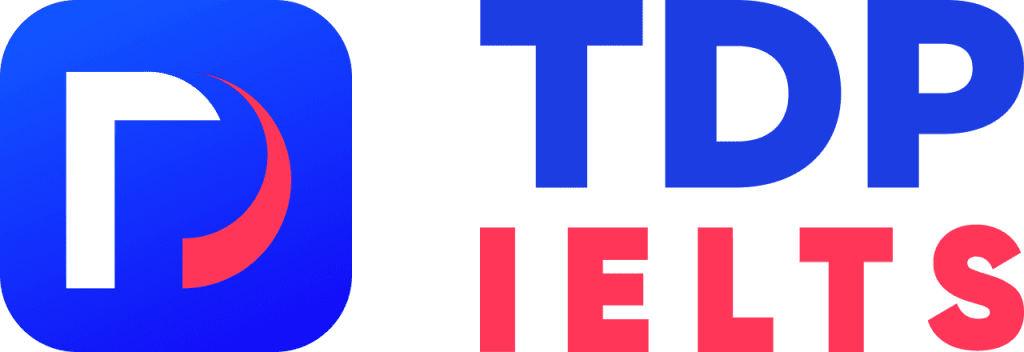Chuyên ngành công nghệ thông tin trong tiếng Anh ngày càng trở nên quan trọng và cần thiết, đặc biệt là với những người đang theo học hoặc làm việc trong lĩnh vực IT. Hãy cùng TDP IELTS điểm qua gần 1200 từ vựng tiếng Anh chuyên ngành công nghệ thông tin nhé!

Xem thêm:
– Từ vựng tiếng Anh chuyên ngành cơ khí
– Từ vựng tiếng Anh chuyên ngành Bán lẻ
– Từ vựng tiếng Anh chuyên ngành bóng đá
– Từ vựng tiếng Anh chuyên ngành bếp
Nội dung
ToggleNgành công nghệ thông tin tiếng Anh là gì?
Ngành công nghệ thông tin trong tiếng Anh được gọi là Information Technology Branch (ITB). Đây là một lĩnh vực sử dụng máy tính, mạng, các thiết bị và cơ sở hạ tầng để tạo ra, xử lý, lưu trữ, bảo mật và trao đổi dữ liệu điện tử. Lĩnh vực Công nghệ thông tin bao gồm ba nhóm chính:
- Software and services: Bao gồm các ứng dụng phần mềm và dịch vụ liên quan.
- Technology hardware and equipment: Bao gồm các thành phần phần cứng và các thiết bị công nghệ.
- Semiconductors and semiconductor equipment: Bao gồm vật liệu chất bán dẫn và thiết bị liên quan.
Từ vựng tiếng Anh chuyên ngành công nghệ thông tin
Một số từ vựng trong 1200 từ vựng tiếng Anh chuyên ngành cntt sau có thể giúp ích trong quá trình thăng tiến của bạn. Cùng điểm qua sơ lược một vài từ vựng tiếng anh chuyên ngành công nghệ thông tin nào!
desktop
- Phát âm: /ˈdɛsktɒp/
- Ví dụ: “I have a powerful desktop computer for graphic design work.”
- Nghĩa: Máy tính để bàn, là một máy tính cá nhân đặt trên bàn làm việc.
hard drive
- Phát âm: /hɑːd draɪv/
- Ví dụ: “Make sure to back up your important files regularly on an external hard drive.”
- Nghĩa: Ổ cứng, là thiết bị lưu trữ dữ liệu trong máy tính.
software
- Phát âm: /ˈsɒftweə/
- Ví dụ: “Microsoft Office is a popular software suite used for word processing and spreadsheet tasks.”
- Nghĩa: Phần mềm, là các chương trình máy tính và tập lệnh điều khiển máy tính.
hardware
- Phát âm: /ˈhɑːdweə/
- Ví dụ: “Upgrading the hardware of your computer can improve its performance.”
- Nghĩa: Phần cứng, là các thành phần vật lý của máy tính như vi xử lý, bộ nhớ, bo mạch chủ, v.v.
download
- Phát âm: /ˌdaʊnˈləʊd/
- Ví dụ: “You can download the latest version of the software from the official website.”
- Nghĩa: Tải xuống, là hành động lấy dữ liệu từ internet về máy tính hoặc thiết bị di động.
file
- Phát âm: /faɪl/
- Ví dụ: “The document is saved as a PDF file for easy sharing and printing.”
- Nghĩa: Tập tin, là một bản ghi thông tin lưu trữ trên máy tính.
firewall
- Phát âm: /ˈfaɪəwɔːl/
- Ví dụ: “A firewall helps protect your computer from unauthorized access and cyber threats.”
- Nghĩa: Tường lửa, là một hệ thống phần mềm hoặc phần cứng ngăn chặn truy cập không ủy nhiệm và bảo vệ máy tính khỏi các mối đe dọa trực tuyến.
folder
- Phát âm: /ˈfəʊldə/
- Ví dụ: “Organize your documents by placing them into specific folders on your computer.”
- Nghĩa: Thư mục, là một không gian lưu trữ dùng để tổ chức tập tin.

format
- Phát âm: /ˈfɔːmæt/
- Ví dụ: “Before using a new memory card, you may need to format it to the desired file system.”
- Nghĩa: Định dạng, là quá trình chuẩn bị một thiết bị lưu trữ để sử dụng.
keyboard
- Phát âm: /ˈkiːbɔːd/
- Ví dụ: “Typing on a mechanical keyboard provides a tactile and satisfying experience.”
- Nghĩa: Bàn phím, là một thiết bị dùng để nhập liệu vào máy tính.
monitor
- Phát âm: /ˈmɒnɪtə/
- Ví dụ: “A high-resolution monitor is essential for video editing and graphic design.”
- Nghĩa: Màn hình, là thiết bị hiển thị thông tin của máy tính.
mouse
- Phát âm: /maʊs/
- Ví dụ: “Use the mouse to click and drag objects on the screen.”
- Nghĩa: Con chuột, là thiết bị nhập liệu cho máy tính.
access
- Phát âm: /ˈæksɛs/
- Ví dụ: “The administrator has access to all files and settings on the network.”
- Nghĩa: Truy cập, là quyền hoặc khả năng tiếp cận một hệ thống hoặc tài nguyên.
advanced
- Phát âm: /ədˈvɑːnst/
- Ví dụ: “Advanced users can customize their operating system to suit their preferences.”
- Nghĩa: Nâng cao, liên quan đến những tính năng hoặc kiến thức cao cấp.
automation
- Phát âm: /ˌɔːtəˈmeɪʃ(ə)n/
- Ví dụ: “Automation in manufacturing has led to increased efficiency and reduced labor costs.”
- Nghĩa: Tự động hóa, là quá trình sử dụng máy móc hoặc hệ thống để thực hiện các nhiệm vụ mà trước đó được thực hiện bằng tay.
connection
- Phát âm: /kəˈnɛkʃən/
- Ví dụ: “Ensure a stable internet connection for smooth online gaming.”
- Nghĩa: Sự liên kết, là một kết nối giữa thiết bị hoặc mạng với một nguồn tài nguyên khác.
communication
- Phát âm: /kəˌmjuːnɪˈkeɪʃən/
- Ví dụ: “Effective communication is essential for collaborative projects.”
- Nghĩa: Liên lạc, là quá trình truyền đạt thông tin giữa các cá nhân hoặc nhóm.
device
- Phát âm: /dɪˈvaɪs/
- Ví dụ: “Smartphones and tablets are portable devices used for various tasks.”
- Nghĩa: Thiết bị, là một công cụ hoặc máy móc được sử dụng cho một mục đích cụ thể.
disruptive
- Phát âm: /dɪsˈrʌptɪv/
- Ví dụ: “The new technology had a disruptive impact on traditional industries.”
- Nghĩa: Tính đứt gãy công nghệ cũ – mới, tính đột phá, có khả năng làm thay đổi hoặc phá vỡ các mô hình hiện tại.
innovation
- Phát âm: /ˌɪnəʊˈveɪʃən/
- Ví dụ: “Continuous innovation is crucial for staying competitive in the tech industry.”
- Nghĩa: Sự đổi mới, là quá trình tạo ra hoặc áp dụng những ý tưởng mới, sản phẩm mới để cải thiện và phát triển.
invention
- Phát âm: /ɪnˈvɛnʃən/
- Ví dụ: “The invention of the internet revolutionized the way people communicate.”
- Nghĩa: Sự phát minh, là quá trình tạo ra một sản phẩm, quy trình mới hoặc ý tưởng mới.
machine
- Phát âm: /məˈʃiːn/
- Ví dụ: “A CNC machine can precisely carve intricate designs on metal.”
- Nghĩa: Cỗ máy, là một thiết bị được thiết kế để thực hiện một nhiệm vụ cụ thể.
user-friendly
- Phát âm: /ˈjuːzər-‘frɛndli/
- Ví dụ: “The new software interface is user-friendly, making it easy for beginners to navigate.”
- Nghĩa: Thân thiện với người dùng, có giao diện hoặc thiết kế dễ sử dụng, đặc biệt là đối với người mới sử dụng.
adware
- Phát âm: /ˈæd.wer/
- Ví dụ: “Some free apps come with adware that displays advertisements while using the software.”
- Nghĩa: Phần mềm quảng cáo, là phần mềm hiển thị quảng cáo khi người dùng đang sử dụng.
avatar
- Phát âm: /ˌævəˈtɑː/
- Ví dụ: “In online forums, users often choose an avatar to represent their virtual identity.”
- Nghĩa: Hình đại diện, là hình ảnh hoặc biểu tượng được sử dụng để đại diện cho một người dùng trên mạng.
application
- Phát âm: /ˌæplɪˈkeɪʃ(ə)n/
- Ví dụ: “There are various applications available for photo editing on smartphones.”
- Nghĩa: Ứng dụng, là một chương trình máy tính thiết kế để thực hiện một nhiệm vụ cụ thể, đặc biệt trên điện thoại di động.
browser
- Phát âm: /ˈbraʊzə/
- Ví dụ: “Google Chrome and Mozilla Firefox are popular web browsers.”
- Nghĩa: Trình duyệt, là chương trình máy tính cho phép người dùng duyệt web và xem nội dung trực tuyến.
bug
- Phát âm: /bʌg/
- Ví dụ: “Software developers work to fix bugs and improve the performance of applications.”
- Nghĩa: Lỗi kỹ thuật, là một sai sót hoặc vấn đề
disk
- Phát âm: /dɪsk/
- Ví dụ: “The computer has a disk drive to read and store data on various disks.”
- Nghĩa: Đĩa, là một phương tiện lưu trữ dữ liệu thông thường, thường được sử dụng trong các thiết bị lưu trữ như đĩa cứng hoặc đĩa quang.
register
- Phát âm: /’rɛʤɪstə/
- Ví dụ: “The register of the computer keeps track of the executed instructions.”
- Nghĩa: Thanh ghi, một phần của bộ nhớ máy tính được sử dụng để lưu trữ thông tin quan trọng như địa chỉ và dữ liệu tạm thời.
store
- Phát âm: /stɔː/
- Ví dụ: “You can store your files on the cloud for easy access from any device.”
- Nghĩa: Lưu trữ, hành động hoặc quá trình đặt dữ liệu vào một nơi nào đó để giữ cho chúng an toàn và dễ truy cập.
signal
- Phát âm: /’sɪgnl/
- Ví dụ: “The weak signal affected the internet speed.”
- Nghĩa: Tín hiệu, là một dạng năng lượng hoặc dữ liệu truyền đạt thông tin giữa các thiết bị hoặc hệ thống.
back up
- Phát âm: /bæk ʌp/
- Ví dụ: “It’s crucial to regularly back up your important documents to prevent data loss.”
- Nghĩa: Sao lưu dữ liệu, là quá trình tạo ra bản sao lưu của dữ liệu để tránh mất mát khi có sự cố.
computerized
- Phát âm: /kəmˈpjuːtəraɪzd/
- Ví dụ: “The library has computerized its catalog for efficient management.”
- Nghĩa: Tin học hóa, là quá trình chuyển đổi hoặc thực hiện thông tin bằng cách sử dụng máy tính hoặc thiết bị tự động.
graphic
- Phát âm: /’græfɪk/
- Ví dụ: “Graphic design software is used to create visual content for websites and advertisements.”
- Nghĩa: Đồ họa, liên quan đến hình ảnh, đồ họa hoặc phương tiện trực quan.
install
- Phát âm: /ɪnˈstɔːl/
- Ví dụ: “You need to install the latest updates to ensure optimal performance.”
- Nghĩa: Cài đặt, là quá trình thiết lập và chuẩn bị một phần mềm hoặc hệ thống để sử dụng.
login
- Phát âm: /ˈlɒɡɪn/
- Ví dụ: “Enter your username and password to log in to your account.”
- Nghĩa: Đăng nhập, là hành động nhập thông tin đăng nhập để truy cập vào một hệ thống hay ứng dụng.
capacity
- Phát âm: /kəˈpæsɪti/
- Ví dụ: “The external hard drive has a capacity of 1 terabyte.”
- Nghĩa: Dung lượng, là khả năng chứa đựng, đo lường bằng byte hoặc các đơn vị lưu trữ khác.
unique
- Phát âm: /juːˈniːk/
- Ví dụ: “Each individual has a unique fingerprint.”
- Nghĩa: Duy nhất, không giống ai khác; chỉ có một trong loại.
chain
- Phát âm: /ʧeɪn/
- Ví dụ: “The company has a chain of stores across the country.”
- Nghĩa: Chuỗi, một loạt các cửa hàng hoặc doanh nghiệp liên kết với nhau.
code
- Phát âm: /koʊd/
- Ví dụ: “Programmers write code to instruct computers to perform specific tasks.”
- Nghĩa: Mã, là dãy các ký tự hoặc hướng dẫn được sử dụng để biểu diễn thông điệp hoặc chỉ thị trong lập trình máy tính.
computer programmer
- Phát âm: /kəmˈpjuːtər ˈproʊɡræmər/
- Ví dụ: “A computer programmer develops software applications for various purposes.”
- Nghĩa: Lập trình viên, là người viết mã máy tính để phát triển ứng dụng phần mềm.
frontend developer
- Phát âm: /ˈfrʌnt ˌɛnd dɪˈvɛləpə/
- Ví dụ: “Frontend developers focus on the visual aspects of websites and user interfaces.”
- Nghĩa: Người phát triển/lập trình các hoạt động được hiển thị trên trang web (ví dụ: giao diện).
backend developer
- Phát âm: /ˌbækˈɛnd dɪˈvɛləpə/
- Ví dụ: “Backend developers work on the server-side logic and database of web applications.”
- Nghĩa: Người lập trình các hoạt động không được hiển thị trên trang web (ví dụ: viết code).
web developer
- Phát âm: /wɛb dɪˈvɛləpə/
- Ví dụ: “Web developers create and maintain websites to ensure functionality and user experience.”
- Nghĩa: Người phát triển web, là người chịu trách nhiệm xây dựng và duy trì các trang web.
configuration
- Phát âm: /kənˌfɪɡjʊˈreɪʃən/
- Ví dụ: “The network configuration was optimized for better performance.”
- Nghĩa: Cấu hình, là cách thiết lập hoặc sắp xếp các thành phần để hoạt động cùng nhau.
blink
- Phát âm: /blɪŋk/
- Ví dụ: “The cursor will blink to indicate the insertion point.”
- Nghĩa: Nhấp nháy, là hiện tượng mất đi và xuất hiện liên tục, thường thấy trong các đèn hoặc con trỏ máy tính.
plotter
- Phát âm: /ˈplɒtə/
- Ví dụ: “A plotter is often used to produce large-scale drawings or designs.”
- Nghĩa: Máy vẽ đồ thị, là một loại máy tính được sử dụng để vẽ hình ảnh lớn hoặc đồ thị kỹ thuật.
permanent
- Phát âm: /ˈpɜːrmənənt/
- Ví dụ: “The data was stored in permanent memory for long-term preservation.”
- Nghĩa: Vĩnh viễn, không tạm thời, kéo dài trong thời gian dài.
slow
- Phát âm: /sloʊ/
- Ví dụ: “The old computer became slow when running modern applications.”
- Nghĩa: Yếu, chậm, không hoạt động nhanh chóng.
packet
- Phát âm: /ˈpækɪt/
- Ví dụ: “Data is transmitted in small packets over the network.”
- Nghĩa: Gói tin, là một đơn vị nhỏ của dữ liệu được chuyển đổi và truyền qua mạng.
anti-virus software
- Phát âm: /ˈæntiˈvaɪərəs ˈsɒftweə/
- Ví dụ: “It’s important to keep your anti-virus software updated to protect your computer from malware.”
- Nghĩa: Phần mềm chống virus, là phần mềm được thiết kế để phát hiện và ngăn chặn các loại virus và phần mềm độc hại khác.

driver
- Phát âm: /ˈdraɪvə/
- Ví dụ: “Make sure you have the latest driver installed for your printer to work correctly.”
- Nghĩa: Trình điều khiển, là một chương trình hoặc tập lệnh cho phép hệ điều hành tương tác với phần cứng máy tính.
troubleshooting
- Phát âm: /ˈtrʌbəlˌʃuːtɪŋ/
- Ví dụ: “The IT department is responsible for troubleshooting and fixing technical issues.”
- Nghĩa: Xử lý sự cố, là quá trình xác định, đánh giá và sửa lỗi kỹ thuật hoặc vấn đề trong hệ thống.
monitor
- Phát âm: /ˈmɒnɪtə/
- Ví dụ: “The monitor displays the visual output from the computer.”
- Nghĩa: Màn hình, là thiết bị hiển thị để xem thông tin hoặc hình ảnh từ máy tính hoặc các nguồn khác.
connect
- Phát âm: /kəˈnɛkt/
- Ví dụ: “You need to connect the printer to the computer using a USB cable.”
- Nghĩa: Kết nối, là hành động liên kết hoặc ghép nối các thiết bị hoặc mạng với nhau.
network
- Phát âm: /’nɛtwɜːk/
- Ví dụ: “The company has a global network of offices and partners.”
- Nghĩa: Mạng lưới, là sự liên kết hoặc kết nối giữa các máy tính, thiết bị, hoặc điểm truy cập để chia sẻ thông tin và tài nguyên.
boot
- Phát âm: /buːt/
- Ví dụ: “You need to boot your computer to start the operating system.”
- Nghĩa: Khởi động, là quá trình bắt đầu hoạt động của máy tính hoặc thiết bị khác bằng cách nạp và thực thi các chương trình khởi động.
access
- Phát âm: /’æksɛs/
- Ví dụ: “Employees have access to the company’s internal network for work-related tasks.”
- Nghĩa: Truy cập, là quyền hoặc khả năng tiếp cận một hệ thống, dịch vụ hoặc tài nguyên.
upgrade
- Phát âm: /ʌpˈgreɪd/
- Ví dụ: “It’s a good idea to upgrade your software regularly to get the latest features and security improvements.”
- Nghĩa: Nâng cấp, là hành động cải tiến hay làm mới một hệ thống, phần mềm, hoặc thiết bị để nâng cao hiệu suất hoặc tính năng.
analyze
- Phát âm: /’ænəlaɪz/
- Ví dụ: “Data analysts use various tools to analyze patterns and trends in large datasets.”
- Nghĩa: Phân tích, là quá trình nghiên cứu và đánh giá thông tin để hiểu rõ hơn về nó.
perform
- Phát âm: /pəˈfɔːm/
- Ví dụ: “The computer needs to perform complex calculations for scientific simulations.”
- Nghĩa: Biểu hiện, hoạt động, là quá trình thực hiện một công việc hoặc nhiệm vụ cụ thể.
user-generated content
- Phát âm: /’juːzə-‘ʤɛnəreɪtɪd ‘kɒntɛnt/
- Ví dụ: “Social media platforms thrive on user-generated content, such as posts, photos, and videos.”
- Nghĩa: Nội dung do người dùng tạo, là thông tin, hình ảnh, hoặc nội dung khác được tạo ra và chia sẻ bởi người sử dụng.
interface
- Phát âm: /’ɪntəˌfeɪs/
- Ví dụ: “The user interface of the application is designed for easy navigation.”
- Nghĩa: Giao diện, là điểm tiếp xúc hoặc kết nối giữa hai hệ thống, thiết bị hoặc người dùng.
operating system
- Phát âm: /’ɒpəreɪtɪŋ ‘sɪstɪm/
- Ví dụ: “Windows, macOS, and Linux are examples of operating systems.”
- Nghĩa: Hệ điều hành, là phần mềm quản lý và điều khiển các tác vụ và tài nguyên của máy tính.
processor
- Phát âm: /’prəʊsɛsə/
- Ví dụ: “Modern computers come with powerful processors to handle complex tasks.”
- Nghĩa: Bộ xử lý, là thành phần của máy tính chịu trách nhiệm thực hiện các phép toán và xử lý dữ liệu.
desktop computer
- Phát âm: /’desk.tɒp kəm’pjuː.tər/
- Ví dụ: “Desktop computers are suitable for tasks that require high computing power.”
- Nghĩa: Máy tính để bàn, là một loại máy tính có thể đặt trên bàn làm việc.
handheld
- Phát âm: /ˌhændˈhɛld/
- Ví dụ: “Smartphones and tablets are popular examples of handheld devices.”
- Nghĩa: Cầm tay, là những thiết bị có thể cầm và sử dụng bằng một hoặc cả hai tay.
input
- Phát âm: /’ɪnpʊt/
- Ví dụ: “The keyboard and mouse are common input devices for computers.”
- Nghĩa: Đầu vào, là dữ liệu hoặc tín hiệu được nhập vào máy tính hoặc thiết bị khác.
output
- Phát âm: /’aʊtpʊt/
- Ví dụ: “The monitor and printer are examples of output devices.”
- Nghĩa: Đầu ra, là kết quả hoặc dữ liệu được xuất ra từ máy tính hoặc thiết bị khác.
compatible
- Phát âm: /kəmˈpætəbl/
- Ví dụ: “Make sure the software is compatible with your operating system.”
- Nghĩa: Tương thích, là khả năng hoạt động hoặc tương thích với một hệ thống hoặc thiết bị khác.
the internet (the net)
- Phát âm: /ði ˈɪntəˌnɛt/
- Ví dụ: “The internet connects billions of devices worldwide.”
- Nghĩa: Mạng internet (mạng), là một hệ thống liên kết các máy tính và thiết bị trên toàn thế giới để chia sẻ thông tin và tương tác.
real-time
- Phát âm: /rɪəl-taɪm/
- Ví dụ: “Real-time communication allows instant interaction without delay.”
- Nghĩa: Thời gian thực, là quá trình xử lý và truyền tải thông tin mà không có độ trễ đáng kể.
server
- Phát âm: /’sɜːvə/
- Ví dụ: “We store our website data on a dedicated server for better performance.”
- Nghĩa: Máy chủ, là một máy tính hoặc hệ thống chịu trách nhiệm cung cấp dịch vụ, tài nguyên hoặc lưu trữ cho các máy tính khác trong mạng.
search engines
- Phát âm: /sɜːʧ ˈɛnʤɪnz/
- Ví dụ: “Google, Bing, and Yahoo are popular search engines.”
- Nghĩa: Công cụ tìm kiếm, là các trang web hoặc ứng dụng giúp người dùng tìm kiếm thông tin trên internet.
multi-user
- Phát âm: /’mʌltɪ-‘juːzə/
- Ví dụ: “Multi-user systems allow multiple users to access and use the system simultaneously.”
- Nghĩa: Nhiều người dùng, là hệ thống cho phép nhiều người dùng truy cập và sử dụng hệ thống cùng một lúc.
portable
- Phát âm: /ˈpɔːtəbl/
- Ví dụ: “Laptops are portable devices that can be easily carried anywhere.”
- Nghĩa: Có thể xách tay, là khả năng di động hoặc có thể mang theo một cách thuận tiện.
modem
- Phát âm: /’məʊdəm/
- Ví dụ: “A modem is used to connect a computer to the internet using telephone lines.”
- Nghĩa: Modem, là một thiết bị chuyển đổi tín hiệu để kết nối máy tính với internet qua đường điện thoại.
binary system
- Phát âm: /’baɪnəri ‘sɪstɪm/
- Ví dụ: “Computers use a binary system with 0s and 1s to represent information.”
- Nghĩa: Hệ thống nhị phân, là cách biểu diễn thông tin bằng cách sử dụng các ký hiệu 0 và 1.
decimal system
- Phát âm: /’dɛsɪməl ‘sɪstɪm/
- Ví dụ: “The decimal system, or base-10, is commonly used in everyday mathematics.”
- Nghĩa: Hệ thống thập phân, là hệ thống đếm dựa trên số 10, được sử dụng phổ biến trong toán học hàng ngày.
Từ vựng tiếng Anh chuyên ngành CNTT về cấu tạo máy móc

Một số máy móc khá phức tạp và cần đa dạng từ vựng tiếng Anh chuyên ngành công nghệ thông tin để giao tiếp thuần thục hơn với các đồng nghiệp nước ngoài. Hãy ghi nhớ các từ vựng tiếng Anh chuyên ngành công nghệ thông itn sau:
- Inspiration (n): Sự cảm hứng
- Example: “Nature often serves as a great source of inspiration for designers creating innovative products.”
- Intersection (n): Giao điểm
- Example: “The traffic light is placed at the intersection to regulate the flow of vehicles.”
- Detailed (a): Chi tiết
- Example: “The architect provided a detailed blueprint of the building’s design.”
- Respective (a): Tương ứng
- Example: “Each team member has their respective roles and responsibilities within the project.”
- Retain (v): Giữ lại, duy trì
- Example: “It’s important for businesses to retain customers by providing quality products and services.”
- Gadget (n): Đồ phụ tùng nhỏ
- Example: “Smartwatches and fitness trackers are popular gadgets for monitoring health and activities.”
- Semiconductor memory (n): Bộ nhớ bán dẫn
- Example: “Semiconductor memory is used in computers for its fast data access capabilities.”
- Unique (a): Duy nhất
- Example: “Every individual has unique characteristics that make them distinct.”
- Vertical (a,n): Dọc; đường dọc
- Example: “The vertical columns on the spreadsheet represent different categories of data.”
- Wire (n): Dây điện
- Example: “Electricity is transmitted through copper wires in electrical circuits.”
- Matrix (n): Ma trận
- Example: “In mathematics, a matrix is a grid of numbers or symbols used for various calculations.”
- Microfilm (n): Vi phim
- Example: “Before digital archives, historical documents were often stored on microfilm for preservation.”
- Noticeable (a): Dễ nhận thấy
- Example: “The new software update brought noticeable improvements in speed and performance.”
- Phenomenon (n): Hiện tượng
- Example: “The northern lights are a natural phenomenon caused by the interaction of solar particles with the Earth’s atmosphere.”
- Position (n): Vị trí
- Example: “The GPS system helps determine the precise position of a vehicle on the map.”
- Prediction (n): Sự tiên đoán, lời tiên đoán
- Example: “Meteorologists use advanced technology for accurate weather predictions.”
- Quality (n): Chất lượng
- Example: “Customers value products that offer high quality and durability.”
- Quantity (n): Số lượng
- Example: “The production manager monitors the quantity of goods manufactured to meet demand.”
- Ribbon (n): Dải băng
- Example: “A ribbon is often used for decorative purposes or to tie gifts.”
- Set (n): Tập
- Example: “A chess set includes all the pieces needed to play the game.”
- Spin (v): Quay
- Example: “The Earth’s axis causes it to spin on its axis, resulting in day and night cycles.”
- Strike (v): Đánh, đập
- Example: “Workers may decide to strike if labor negotiations break down without resolution.”
Từ vựng chuyên ngành IT- Từ vựng tiếng Anh về hệ thống dữ liệu
Từ vựng tiếng Anh chuyên ngành công nghệ thông tin liên quan về hệ thống dữ liệu tuy khó nhưng sẽ hỗ trợ cho bạn rất nhiều đấy. Bỏ túi ngay bộ từ vựng tiếng Anh chuyên ngành công nghệ thông tin phía dưới đi nhé!
- Alternative (n): Sự thay thế
- Example: “In case of a power outage, having a generator can be a reliable alternative source of electricity.”
- Apt (v): Có khả năng, có khuynh hướng
- Example: “She is apt at solving complex problems due to her analytical skills.”
- Beam (n): Chùm
- Example: “A laser beam is a concentrated and focused stream of light used in various applications.”
- Chain (n): Chuỗi
- Example: “Supply chain management involves coordinating and managing the various stages in the production process.”
- Clarify (v): Làm cho trong sáng dễ hiểu
- Example: “The instructor clarified the confusing concepts to ensure everyone understood the material.”
- Coil (v,n): Cuộn
- Example: “The metal coil is used to store and release energy in various electronic devices.”
- Condense (v): Làm đặc lại, làm gọn lại
- Example: “To save space, the document was condensed without losing essential information.”
- Describe (v): Mô tả
- Example: “The witness was asked to describe the suspect’s appearance and actions during the incident.”
- Dimension (n): Hướng
- Example: “The architect carefully considered each dimension when designing the new building.”
- Drum (n): Trống
- Example: “A drum is a percussion instrument that produces sound when struck with a drumstick or hands.”
- Electro sensitive (a): Nhiễm điện
- Example: “Some electronic components are electro-sensitive and can be damaged by static electricity.”
- Electrostatic (a): Tĩnh điện
- Example: “The process of electrostatic painting uses static electricity to evenly coat surfaces.”
- Expose (v): Phơi bày, phô ra
- Example: “The artist decided to expose the raw beauty of the materials used in the sculpture.”
- Guarantee (v,n): Cam đoan, bảo đảm
- Example: “The warranty serves as a guarantee that the product will be repaired or replaced if defects occur.”
- Demagnetize (v): Khử từ hóa
- Example: “To protect sensitive data, old hard drives are demagnetized before disposal to erase information.”
- Intranet (n): Mạng nội bộ
- Example: “Companies use an intranet to facilitate internal communication and information sharing among employees.”
- Hammer (n): Búa
- Example: “A hammer is a versatile tool used for driving nails or breaking objects.”
- Individual (a,n): Cá nhân, cá thể
- Example: “Each individual has unique skills and strengths that contribute to the success of the team.”
- Inertia (n): Quán tính
- Example: “An object at rest tends to stay at rest, demonstrating the principle of inertia.”
- Alphanumeric data (n): Dữ liệu chữ-số
- Example: “Usernames and passwords are often alphanumeric data, including both letters and numbers.”
- Establish (v): Thiết lập
- Example: “The company worked hard to establish a strong presence in the market through effective marketing strategies.”
- Permanent (a): Vĩnh viễn
- Example: “Permanent markers are used for writing on surfaces where the ink should not fade or wash away.”
- Diverse (a): Nhiều loại
- Example: “The team members come from diverse backgrounds, bringing a variety of skills and perspectives.”
- Sophisticated (a): Phức tạp
- Example: “The new software includes sophisticated features to meet the complex needs of modern businesses.”
- Monochromatic (a): Đơn sắc
- Example: “A monochromatic color scheme involves using different shades of a single color for a harmonious look.”
- Blink (v): Nhấp nháy
- Example: “The indicator light on the device will blink when it’s in standby mode.”
- Dual-density (n): Dày gấp đôi
- Example: “Dual-density foam mattresses provide a comfortable sleep experience with varying levels of support.”
- Shape (n): Hình dạng
- Example: “The artist used different tools to shape the clay into a beautiful and unique sculpture.”
- Curve (n): Đường cong
- Example: “The road had a gentle curve, making the drive more interesting and scenic.”
Từ vựng tiếng Anh chuyên ngành CNTT về phần mềm
Từ vựng tiếng Anh chuyên ngành công nghệ thông tin về các phần mềm cũng quan trong không kém. Điểm sơ qua các từ vựng tiếng Anh chuyên ngành công nghệ thông tin dưới đây:
Irregularity (n): Sự bất thường
- Example: “The irregularity in the system’s performance prompted further investigation.”
Command (n): Lệnh (trong máy tính)
- Example: “In computer programming, a command is an instruction given to execute a specific operation.”
Circuit (n): Mạch
- Example: “The electrical circuit was carefully designed to ensure efficient energy flow.”
Complex (a): Phức tạp
- Example: “Solving the complex mathematical problem required advanced skills and knowledge.”
Component (n): Thành phần
- Example: “A computer motherboard consists of various electronic components like resistors and capacitors.”
Computer (n): Máy tính
- Example: “A personal computer is an essential tool for various tasks in today’s digital age.”
Computerized (adj): Tin học hóa
- Example: “Many manual processes have been computerized to improve efficiency and accuracy.”
Convert (v): Chuyển đổi
- Example: “You can convert the file from one format to another using specialized software.”
Demagnetize (v): Khử từ hóa
- Example: “To protect sensitive information, it’s important to demagnetize old hard drives before disposal.”
Device (n): Thiết bị
- Example: “A smartphone is a versatile device that combines various functions in one portable gadget.”
Decision (n): Quyết định
- Example: “Making informed decisions is crucial in both personal and professional life.”
Division (n): Phép chia
- Example: “In mathematics, division is an arithmetic operation involving the distribution of a quantity.”
Minicomputer (n): Máy tính thu nhỏ
- Example: “Minicomputers were widely used in the 1960s and 1970s for specific computing tasks.”
Data (n): Dữ liệu
- Example: “Analyzing large sets of data helps businesses make informed decisions and identify patterns.”
Binary (adj): Nhị phân
- Example: “Computers use a binary system, representing information using combinations of 0s and 1s.”
Pulse (n): Xung (điện)
- Example: “In electronics, a pulse is a brief burst of electrical energy or signal.”
Xem thêm:
– Từ vựng tiếng Anh chuyên ngành công an
– Từ vựng tiếng Anh chuyên ngành báo chí
– Từ vựng tiếng Anh chuyên ngành bảo hiểm
Từ vựng tiếng Anh chuyên ngành CNTT về mạng và bảo mật mạng

Từ vựng tiếng Anh chuyên ngành công nghệ thông tin về bảo mật mạng là rất quan trọng trong kỉ nguyên số này. Học ngay các từ vựng tiếng Anh chuyên ngành công nghệ thông tin sau:
- Broadband internet / Broadband: Mạng băng thông rộng
- Firewall: Tường lửa
- ISP (Internet Service Provider): Nhà phân phối dịch vụ Internet
- The Internet: Internet
- Web hosting: Dịch vụ thuê máy chủ
- Website: Trang web
- Wireless internet / WiFi: Không dây
- To browse the Internet: Lên mạng (để tìm kiếm)
- Download (v): Tải xuống
- Upload (v): Tải lên
- Domain: Tên miền
- Cloud: Điện toán đám mây
- IP Address: Địa chỉ IP (giao thức internet)
- Exploit (v): Tấn công lỗ hổng mạng
- Breach: Lỗ hổng dữ liệu / vi phạm dữ liệu
- Malware: Phần mềm độc hại (virus)
- Worm: Sâu máy tính
- Spyware: Phần mềm gián điệp
Thuật ngữ và viết tắt từ vựng tiếng Anh chuyên ngành CNTT
Không chỉ từ vựng tiếng Anh chuyên ngành công nghệ thông tin đơn, các thuật ngữ cũng nên được để tâm:
- CPU (Central Processing Unit): Whenever you open an application on your computer, the CPU takes care of processing and executing computational tasks.
- Database: The company’s database contains information about customers, products, and orders.
- FAQ (Frequently Asked Questions): The FAQ page on the website addresses common questions that users frequently ask.
- HTML (Hypertext Markup Language): The website is built using HTML to format and display content.
- LAN (Local Area Network): Computers in an office often connect to each other through a local area network.
- RAM (Random Access Memory): RAM helps the computer quickly access data and run applications.
- URL (Uniform Resource Locator): The URL directs your browser to the specific web page you want to visit.
- WAN (Wide Area Network): A wide area network connects computers and devices across a broader geographical area.
- WWW (World Wide Web): The World Wide Web is a global information network accessible through the internet.
- DNS (Domain Name System): DNS translates domain names into IP addresses, facilitating internet communication
- DOS (Disk Operating System): DOS was an early disk-based operating system used in personal computers.
- OCR (Optical Character Recognition): OCR technology converts scanned text or images into editable and searchable data.
- PDA (Personal Digital Assistant): A PDA is a handheld device used for personal organization and information management.
- USB (Universal Serial Bus): USB is a common interface for connecting devices to computers, such as flash drives or printers.
Mẫu câu giao tiếp Từ vựng tiếng Anh chuyên ngành CNTT
Cùng điểm qua từ vựng tiếng Anh chuyên ngành công nghệ thông tin ở dạng các mẫu câu dưới đây:
- Asking for Technical Support:
- Could you please assist me with an issue I’m facing on my computer? I think there might be a software glitch.
- Explaining a Network Problem:
- We seem to be experiencing connectivity issues on the LAN. Could you check if there’s a problem with the server?
- Discussing Software Development:
- Our team is currently working on a new application. We’re using agile methodology for faster development cycles.
- Inquiring about System Upgrades:
- I heard there’s an upcoming upgrade for the operating system. Can you provide details on the new features?
- Reporting a Hardware Problem:
- My desktop computer is not booting up properly. I suspect there might be an issue with the hard drive.
- Talking about Cybersecurity:
- It’s crucial to implement robust firewall settings to protect against potential cyber threats.
- Discussing Cloud Computing:
- Our company is considering migrating to a cloud-based storage system for better scalability and accessibility.
- Inquiring about Database Management:
- Could you explain the process of data normalization in our database management system?
- Asking for IT Training:
- I’d like to enroll in a course to enhance my skills in web development and learn about the latest programming languages.
- Talking about User Experience (UX):
- The website’s UX needs improvement. We should consider redesigning the interface for a more user-friendly experience.
Bài tập: Từ vựng tiếng Anh chuyên ngành công nghệ thông tin
Các bài tập sau sẽ test khả năng vận dụng từ vựng tiếng Anh chuyên ngành công nghệ thông tin của bạn. Cùng tập luyện từ vựng tiếng Anh chuyên ngành công nghệ thông tin thôi!
Bài 1
Chọn câu trả lời đúng nhất
- We’re seeking 8 programmers to develop our web-based…
- applications
- appliances
- applause
- Many programmers use libraries of (modifiable) code instead of…
- coding
- code
- coded
- Boris is going to assist us in implementing various software…
- parts
- pieces
- components
- 4. He’s really skilled at…
- trouble
- fault-finding
- troubleshooting
- How good are you at _________________ stored procedures?
- on writing
- when writing
- at writing
Bài 2
Dịch nghĩa các từ vựng tiếng Anh chuyên ngành công nghệ thông tin sau:
- back up
- upgrade
- upload
- set up
- keep up / catch up
- troubleshoot
- software
- application
- operating system
- portable
Đáp án từ vựng tiếng Anh chuyên ngành công nghệ thông tin
Bài 1
- We’re seeking 8 programmers to develop our web-based…
1. applications - Many programmers use libraries of (modifiable) code instead of…
2. code - Boris is going to assist us in implementing various software…
3. components - He’s really skilled at…
3. troubleshooting - How good are you at _________________ stored procedures?
3. at writing
Bài 2
- back up: sao lưu dữ liệu
- upgrade: nâng cấp
- upload: tải lên
- setup: thiết lập
- keep up / catch up: bắt kịp
- troubleshoot: sửa lỗi
- software: phần mềm
- application: ứng dụng
- operating system: hệ điều hành
- portable: có thể xách tay
Lời kết: Từ vựng tiếng Anh chuyên ngành công nghệ thông tin
Trên đây là bản tổng hợp từ vựng tiếng Anh theo chủ đề công nghệ thông tin phổ biến nhất, được biên soạn bởi đội ngũ chuyên gia học thuật của FB TDP IELTS. Hy vọng rằng bài viết này sẽ giúp các bạn làm việc trong lĩnh vực công nghệ thông tin dễ hơn, đặc biệt là mảng từ vựng tiếng Anh chuyên ngành công nghệ thông tin .











